Kathmandu
Letter #27: My first impressions of Kathmandu, and the first day of the Annapurna Base Camp trek.
3/31/23
It’ll be impossible to describe the absolute majesty of the Himalayan mountains, and I'm only on day 1 of the trek.
Yesterday, Abinta, my trekking guide, Nabaraj, the porter, and myself took a 7 hour bus ride from Kathmandu to Pokhara. I was beyond shocked that none of the roads were paved. Only later would I learn that the roads do get paved, but then landslides wipe them out every monsoon season. So it’s pointless to rebuild the roads to perfection when Mother Nature will do what she’s going to do. And so, after 7 hours of rocking back and forth on the bus, stopping at roadside rest stops that had squat toilets without toilet paper, when we finally reached Pokhara I felt like I was sitting on a boat, my body still in constant motion. This country is one of the poorest in Asia, and certainly in the world. I could see evidence of it during the bus ride, locals living in tents on the roadside in the middle of the city. Dust is everywhere here, there would be no way to escape it. Out in the countryside, shacks act as shelters for many families. For many years, agriculture was the main source of income for the Nepali people, and now it is tourism due to the influx of trekkers and foreigners wanting to see this beautiful, exotic land. Roughly 75% of the land is covered by mountainous terrain, making it difficult to farm in a high capacity. That coupled with the country being extremely prone to natural disasters, leaves its residents in a precarious situation for secure housing.
Nepal has never been colonized. The British held part of the country momentarily, but were ultimately defeated by the powerful Nepalese Gurkhas. Nepal is completely landlocked—no ports of entry and the mountains make conquering this land nearly impossible. And, so, even if there were a precious commodity from the land that would be desired by intruders, it cannot easily be taken out of the country. Nepal is known for having a corrupt government (still newly a multi-party democracy from the previous monarchy), but they are independent, the people seem un-jaded, and, well…happy.
It is easy to see Nepal has not advanced rapidly as many other developing countries have. No downtown high-rises, no real evidence of tech or finance industries. There is one international airport in Kathmandu, and it looks like it hasn’t been updated since its inauguration in 1955.
But MAN. The traditions that are upheld here are so beautiful. I visited Durbar Square, Kathmandu’s Hindu temple / ex-palace of the king, and saw the most ornate structures I’ve ever witnessed. Wood carvings depicting Hindu deities, dating back to the 17th and 18th centuries, cover the buildings. You could sit and stare at them for hours and still not be able to take in all the detail. I saw an animal sacrifice in the palace square, the blood given as an offering to the Goddess, Durga. She is one of the only deities that can accept sacrifices. Later, the tour guide, Prakesh, took me to an open cremation ceremony at Shree Pashupatinath.


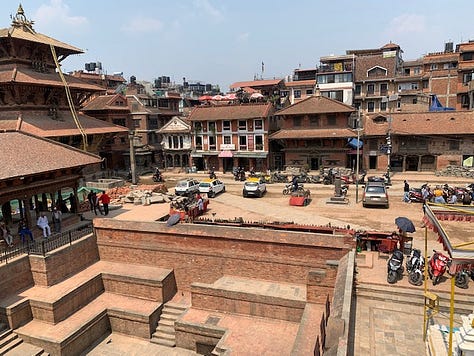

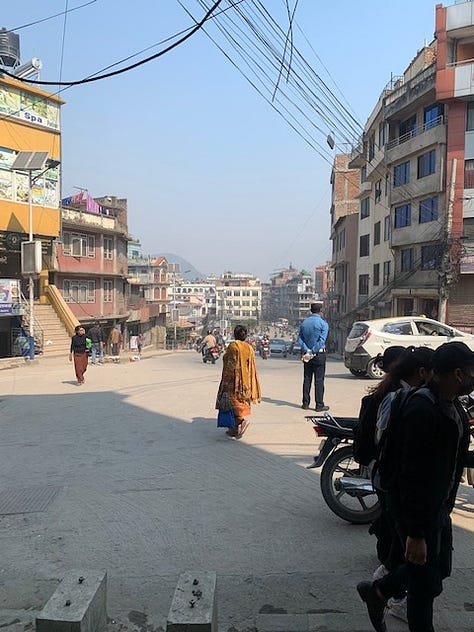
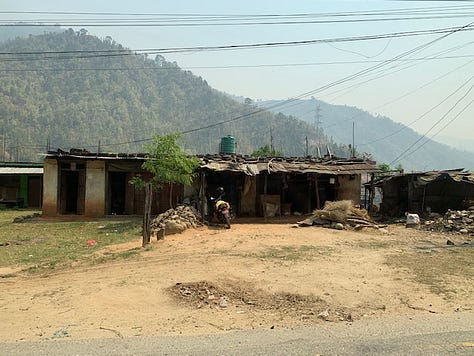
“At Shree Pashupatinath, some come to enjoy the Hindu-only temple, some the art, murals, and architecture, others to make money off of tourists. To many, however, this temple is known for those who burn their dead and mourn in full view of locals and tourists.
Shree Pashupatinath is the oldest Hindu temple complex in Nepal, but despite that fulsome claim, no one really knows when it was built. Heritage says 300 BCE, but its first chronicled mention is the eighth century, and the main temple’s present form only came into being in the seventeenth century.”
The bodies of loved ones who’ve passed on are prepared in yellow cloths and orange flowers, and the son or daughter of the deceased light a fire under the funeral pyre. Family, friends, and neighbors gather to mourn and watch the body burn. After about 2-3 hours, the ashes are pushed into the holy river that flows down from the Himalayas. There was tons of trash in that river, running through a city so densely packed with humans, dogs, and cows, but Prakesh told me that when he was 6, he recalled his family bathing in—and even drinking from—this holy river. It was hard to imagine the river being clean enough for that, especially knowing how many ashes of the bodies were deposited into the river every day. I couldn’t believe I was able to witness such an ancient tradition, seeing at least 5 cremations in the short amount of time I was there.
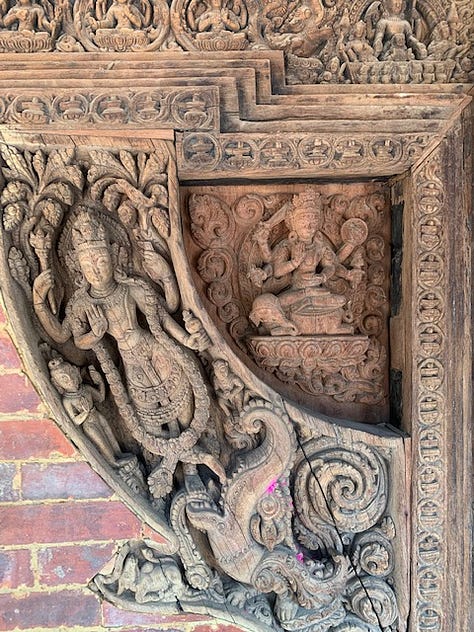


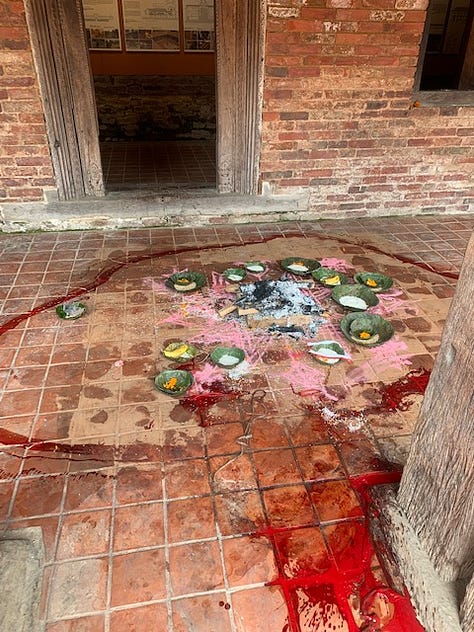
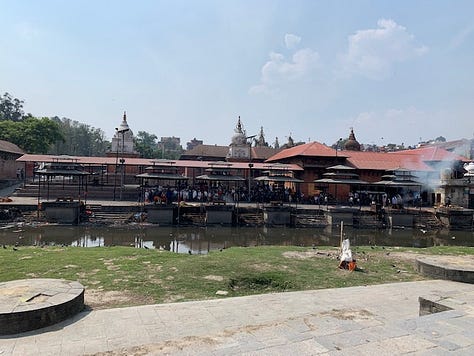
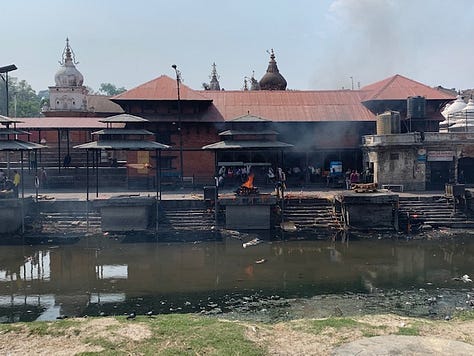
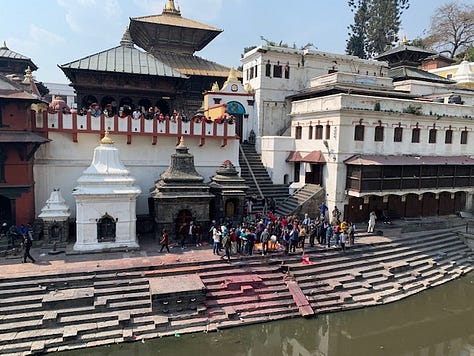

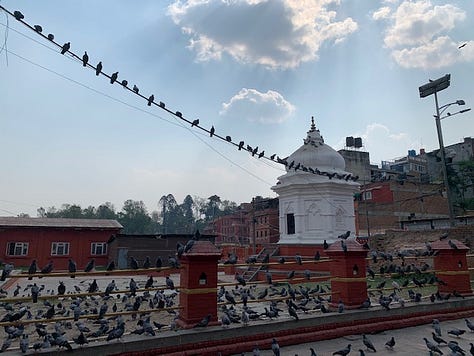
I visited the Buddha Stupa, which was truly one of the most magnificent places I’d ever been to. Smack dab in the center of the city, there is this towering white dome, with the painted eyes of Buddha seemingly watching over the residents. The visitors walk clockwise around the monument, passing their right hand over the many prayer wheels built into the structure. Colorful prayer flags flutter above, as pigeons—a sign of peace— flocked through the sky. The environment was oddly calm and quiet, given its bustling location in Kathmandu.

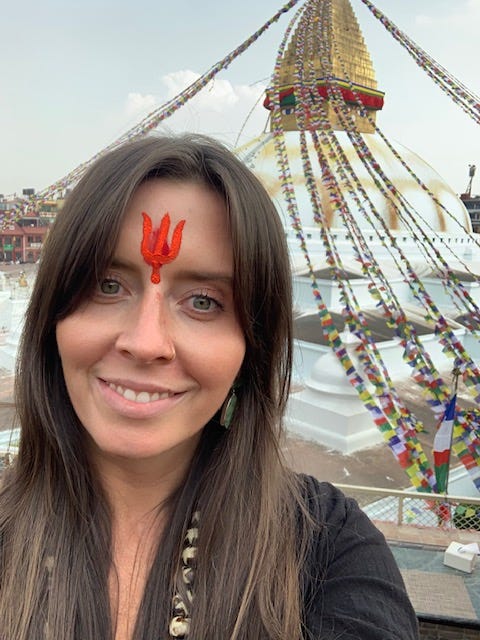
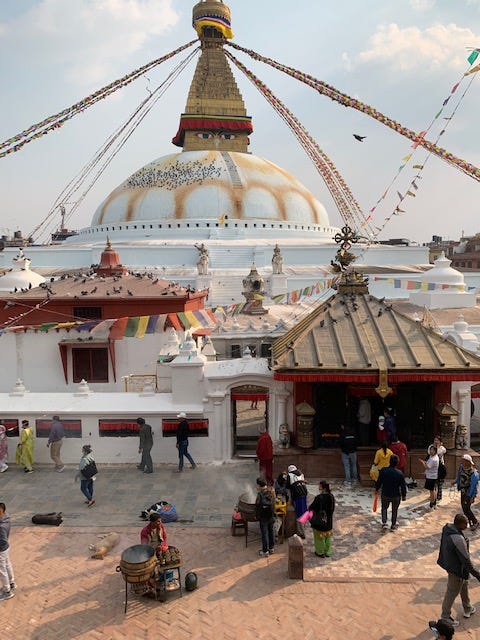

It isn’t totally easy to be in Nepal. It is very foreign and the lack of infrastructure and obvious poverty are sometimes hard for me to stomach. But I love this place. I love it like I love Mexico, an indescribable emotional bond that I felt almost immediately. A feeling that isn’t easily comparable to others in my life. It’s like I felt a warm love for the place, and knew I had been right to finally see this part of the world. The people are so beautiful to me. Some are so old, the lines on their faces show how much life they’ve lived. The people wear colorful clothing and ornate jewelry—TONS of body piercings—decorate all ages. I was already in awe of the culture, and I hadn’t even made it to the mountains yet.
We reached Pokhara on Thursday, March 30th. Pokhara is as charming as any little mountain town can be. Developed over time to accommodate the increase in foreign trekkers, but still not commercialized like you might expect in so many touristic places. There are tons of local restaurants selling your fill of dhal bat (lentils and rice), stores selling traditional handicrafts, cashmere scarves, textiles, jewelry, and trekking gear, and plenty of bars featuring nightly live music.
Abinta and I loaded up on chocolate bars and cough drops, both of us recovering from colds on our way to the trek. I purchased a few more trekking items she strongly recommended, we had dinner together, and I was in bed by 9pm.
The following morning we were picked up by an off-road vehicle that would take us as far as Birethanti, as the further roads were under repair from landslides and vehicles could not pass. We jammed out to whatever Nepali songs the driver had on his USB playlist, the windows down, welcoming in the refreshing mountain air.
We said goodbye to our driver, then Abinta, Nabaraj, and myself set out for a 2 hour trek to the next village. It wasn’t too hard, and Abinta continuously checked on me to make sure my recovering cold could handle it. We stopped for lunch at a charming village house complete with a wood-burning stove, communal table, and kitchen cat that napped in my lap while I ate. When we set off for another 2 hour trek to the next village, it began raining. We threw on our plastic ponchos and fastened rain covers over our bags and went for it. My boots, socks, and pants, were soaked through, and I wondered if I could do this for another 7 or 8 days.

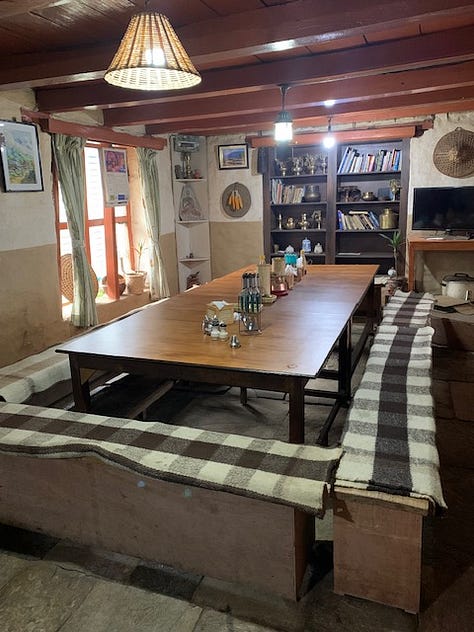



After a while we ran into an old man, a local, whom Abinta affectionately referred to as Grandfather. He was the quintessential depiction of what you’d imagine a Nepali villager from the mountains to be. A long white beard, stained yellow from smoking. Deep crevices on the face his rich caramel skin, with only a few remaining teeth, mostly black. He informed us that the path ahead was covered by a landslide, so we followed him down a different trail. He sang songs for us and danced along the way. It made the rain considerably less miserable.
We reached Mountain Discovery Lodge around 4pm, just as the rain was letting up. Walking onto that property was like walking into heaven. There was an expanse of a flat, grassy area with chickens and puppies running around, prayer flags stretched across the sky above. The peaks of Machhapuchhare and Annapurna South shone in the background, white with snow.
The rooms of the lodge were basic and humble, but held the heaviest blankets I’d ever seen on the beds. There weren’t many lodgers that night, so I had a private room with TWO of these incredible blankets. Bathrooms are outside and shared. Abinta had warned me that as we got closer to base camp, the lodges were few and far between and I may be sharing a room some nights.
The dining hall had a fire going so we hung up our went clothes and dried out our boots. The poncho I had borrowed from Abinta’s hostel had two holes in it, so my clothes and bag still got wet. 😵💫
The fire helped us warm up quickly, and I spent the remainder of the day writing and taking in the views. It’s impossible to capture the beauty of the mountains in a photograph. They’re multi-dimensional, so many layers of vegetation and rivers, different levels of peaks stretching as far as your eyes can see.
My tummy was a little unsettled that day, so I had a simple vegetable soup for dinner, an apple for dessert. Abinta warned me about eating too little, encouraging me to fill up on as much food as possible, and drinking tons of water to make sure I would avoid Acute Mountain Sickness later on.
I went to bed early, around 8pm. I felt foolish about the unnecessary things I had kept in my trekking bag. Makeup?! A tank top?! What was I thinking…this place is FREEZING! We were lucky this lodge had a wood burning stove—the lodges higher up would not, and NONE of the rooms are heated.
I read my Kindle to make me sleepy, completely covered under two blankets like a little fort. I was warm enough to fall asleep, but when I woke up and had to change back into my trekking gear, I began to panic that I would be so cold ALL THE TIME.
To be continued…
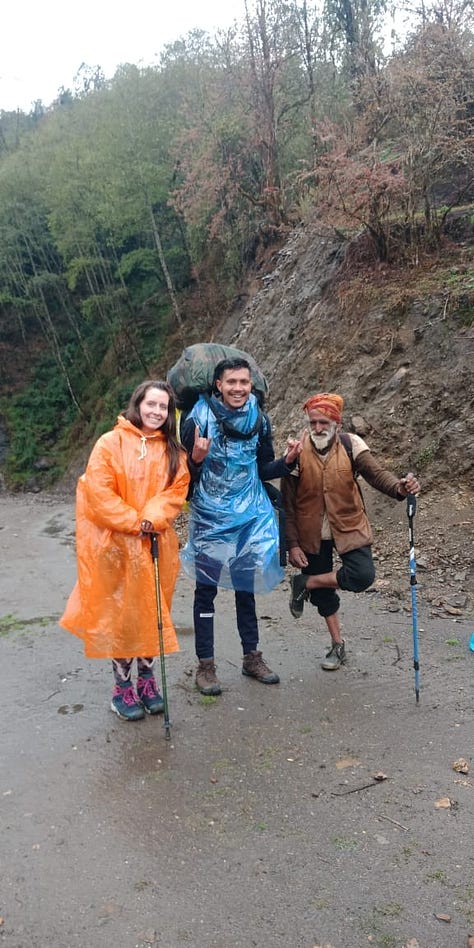
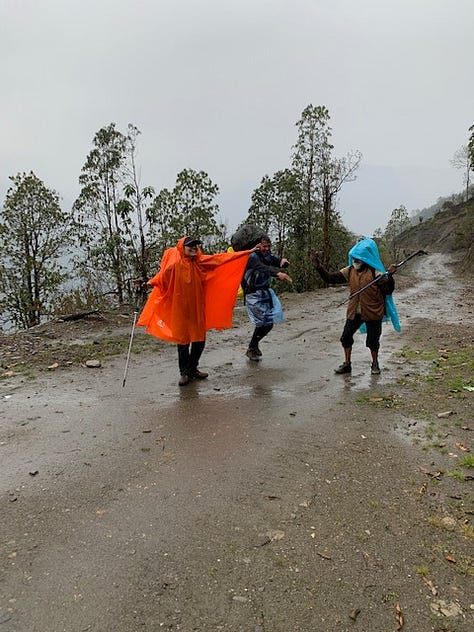
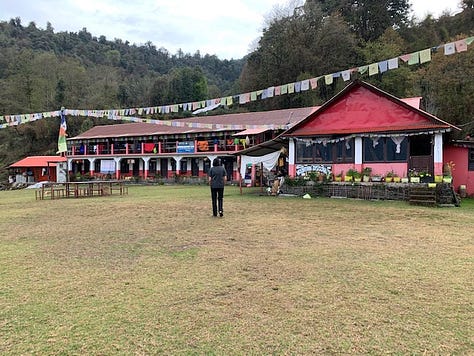
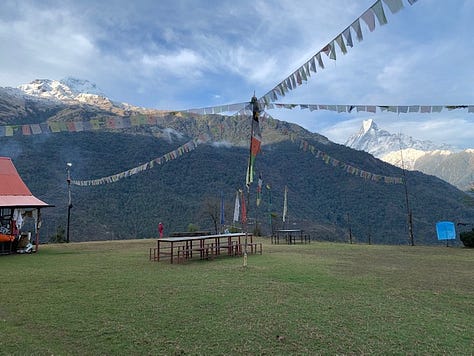

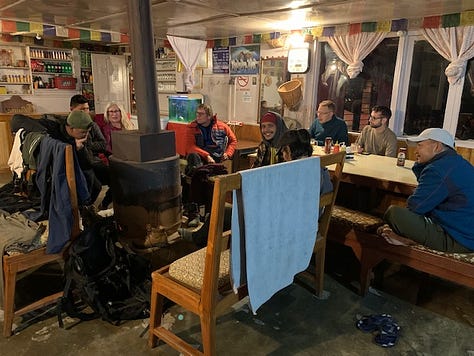
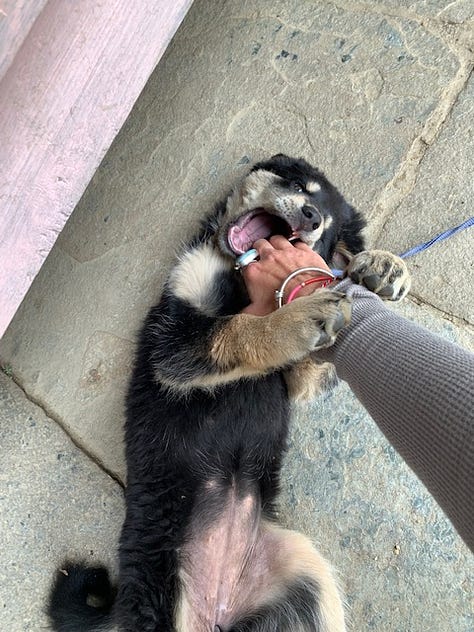

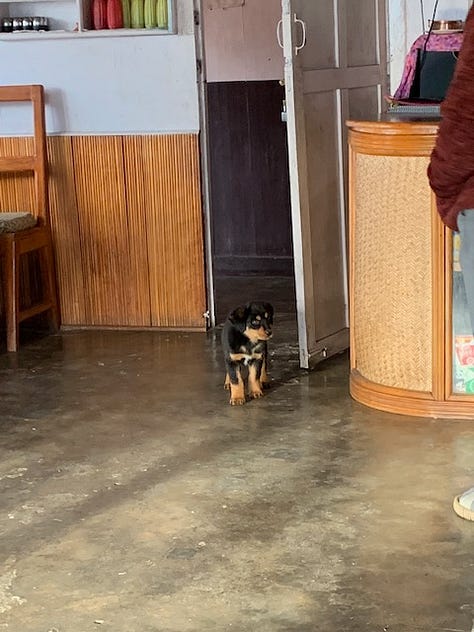
Hey! Would you like to connect over creativity, self-growth, and problem-solving? Or just to have a virtual glass of wine or mocktail? Please book a time on my Calendly for us to chat! I can’t wait to see you. XOXO.
If you’re enjoying On the Road, please share with others who you may think would enjoy as well! As always, I love reading your comments and feedback. If you're not already subscribed, please click the button below so I can continue sending you weekly-ish stories and lessons while I travel. 🚙




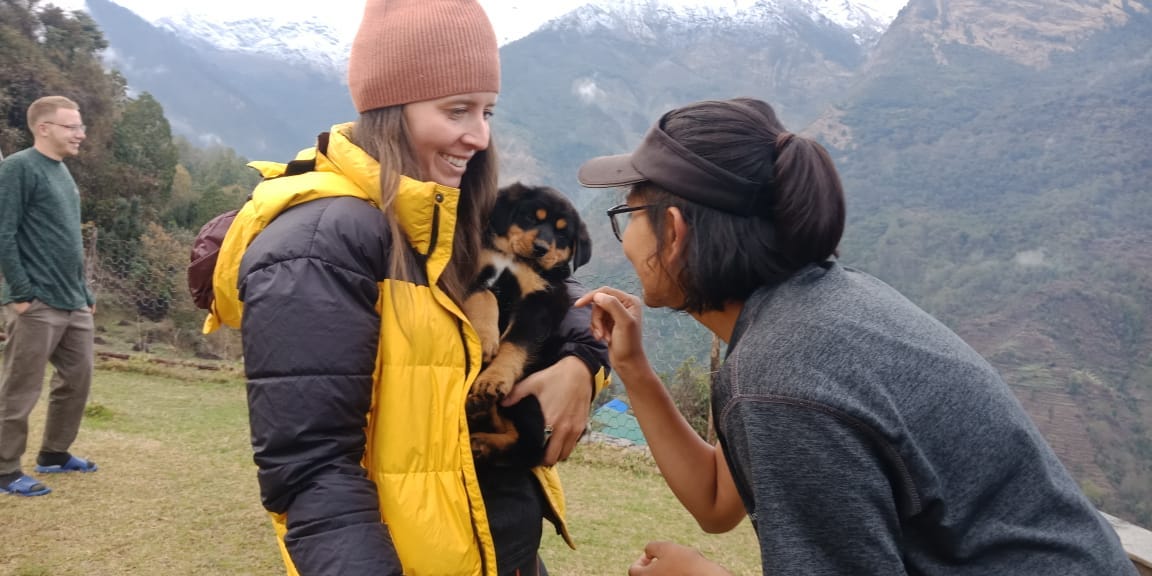
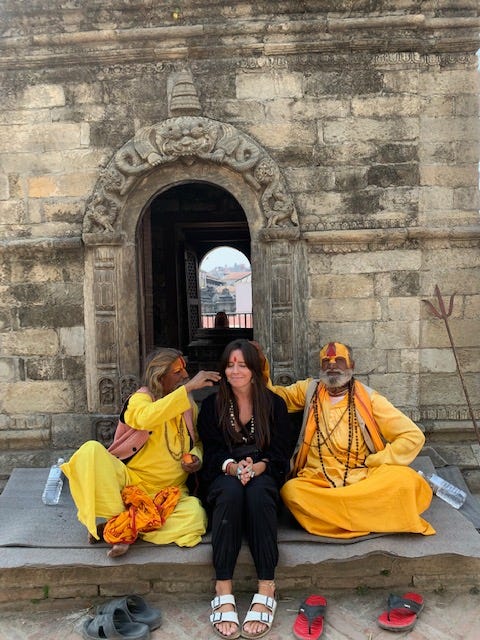
Stay warm!!!!! I love all of your posts but this one struck me because of the cold. Sending you love, light and strength, my friend. xoxo